I've been meaning to upload this for a while now...
I've found an elegant solution to how to fit Fastcap's "Little Lipper" router outrigger accessory (for flush trimming operations) onto the OF1400 - no modification to the router needed. As I understand it, this approach should apply to other routers as well (at least any that already feature at least one stock threaded hole in the base).
Here it is:
View attachment 1
That tiny threaded adapter in the bottom right of the image is where all the magic happens.
Here's a close up, showing the 1/4-20 hex mounting bolt that ships with the Little Lipper (use of which relies on a destructive through-hole in the router base) and the threaded 1/4-20 x M6-1 adapter (which makes use of the existence of the stock threaded holes - only one needed - in the base of the OF1400):
View attachment 2
Here it is installed in the Little Lipper:
View attachment 4
The large diameter fender-style washer that also comes with the Little Lipper will not needed.
As a regular user of the LR32 system I am familiar with installing and uninstalling it's guide rail sled onto/off-of my OF1400, a task which is facilitated via the use of two M6 x 1 bolts. I also knew that the Little Lipper relies on an internally (female) threaded hole cut for 1/4-20. The trick was finding a conversion bolt that converted from one thread to the other.
Having now relied on this solution in the course of milling a couple hundred lineal feet of solid maple edgebanding, I can report that it works so well that it's honestly as if the disparate pieces were an OEM-offered combination.
You will note in the above photo the installed chip catcher - it works perfectly in conjunction with the Little Lipper - the result being that zero (and I mean zero) airborne dust is produced. At least that's what I experienced while using the router to flush trim ~1-inch thick (5/4) and 15-20mm wide reclaimed maple milled into solid edge banding and glued into domestic, cabinet-grade, 18mm-thick unfinished domestic birch ply using Whiteside's "Ultimate Flush Trim" spiral bit (UDFT9112). [Side note: I used HValley Tool's - formerly Eagle America - edge banding router bit set (190-2045) to mill the material.]
Any chips/shavings not captured by the stock dust collection just falls harmlessly to the floor (none of which first plows you in the face). The chip catcher acts to prevent what would otherwise happen if you tried this operation without it (all the escaped chips - and these would be ample - would end up pounding you directly in the face).
This is an impressive marriage of stock tool and after-market accessory that I think anyone would be impressed with, especially since, in practice, zero modification to the router is required.
To elaborate on that last point, the icing on the cake is not having to drill a mounting hole into the intricately honey-combed base of the OF1400. As anyone who has ever removed the stock Masonite/hardboard sub-base plate from this router can testify, there's literally only one sub-postage-stamp-sized area where there's enough solid real estate available to be able to drill the otherwise necessary through-hole.
You'll note on Fastcap's product video (where Paul Akers showcases the Little Lipper installed on an OF1400) - pause the video and zoom in - that where he has the Little Lipper installed is literally the only place it can be installed on this particular router (if you go the undesirable route of drilling a hole through the base of the router). This is one of those "options" that if not accomplished perfectly results in lots of heartache. Best to avoid it altogether!
I'll admit that as soon as I observed this dilemma (and how poor a candidate the OF1400 is for use in conjunction with the Little Lipper, assuming there's a burning desire to drill a through-hole into a perfectly good router base) I just knew there had to be a better solution.
So, after some internet sleuthing, I found the following:
https://www.ebay.com/itm/175902542664
While the shipping time is lengthy (at least for us coddled "first"-world'ers), for anyone planning ahead, this ~$7 solution (I bought two just to have one in spare, so my cost was just shy of US$12) - at least for anyone seeking to use the Little Lipper in conjunction with their OF1440 - is a no-brainer. This high quality nickle-plated threaded adapter fits the bill perfectly.
Note during use - a dab of blue loctite on the 1/4-20-end of the adapter aids in keeping the adapter fixed in the internally-threaded rod that forms the backbone of the Little Lipper. Absent this application, you'll find that the M6-end of the adapter "sticks" in the threaded hole in the base of the router (which is aluminum or magnesium - it's "soft" relative to the steel adapter), requiring you to have to first unscrew the Little Lipper from the adapter (that steel-to-steel connection is what typically breaks-free first) and then grasp hold of the thin shoulder of the adapter with a pair of pliers to nudge it loose from the base of the router. Red loctite would be the final solution to this minor problem but since I want to preserve my future ability to fit the Little Lipper to other routers, I opted for blue threadlock.
Also, while the OF1400 features two threaded holes in its base, the ideal hole to deploy is the one located on the side opposite the dust port (IOW the same side with the knob). Installing the Little Lipper in this configuration is ergonomically excellent and makes for a well-balanced tool (the handle is typically pointing right at your stomach, as is the dust port - compare this to the Paul Akers approach which results in the handle and dust port sticking straight up - not very ergonomic). Set up "my" way it's an total pleasure to use! [Note - the router will need to be rotated such that the handle is facing directly away from the user in order to get at the last few inches at the far end of the panel being trimmed - this works fine in practice since it need not be a climb cut assuming the work piece is to the user's right. Of course, a little bit of climb cutting is required but its the short area closest to the user at the near side of the workpiece, when the handle is pointing at the user, so that's easily accomplished.
View attachment 3
Before:
View attachment 5
...and after:
View attachment 6
So, in summation, this combination of stock router and two after-market components (the latter constituting a total outlay of ~US$50) - a marriage made in heaven - works perfectly for what I need it to, which is to allow me to plow through all the hardwood material sitting proud of the cabinet panel that I'm edgebanding in a single pass.
This is the quick-to-setup, remarkably-effective-in-use and far-cheaper alternative to what Festool will sell you which is it's (by comparison) rather cumbersome and unwieldy (in marked contrast to the engineering simplicity of the Little Lipper) and far pricier (total cost well more than three times that of the Little Lipper/threaded adapter option) trio of:
https://www.festoolusa.com/accessory/486058---up-ofhttps://www.festoolusa.com/accessory/486052---wa-ofhttps://www.festool.com/accessory/routing/machine-accessories/stops-and-guides/486242---sf-of*
*plus, some modification to this accessory will be needed to get it to work with the OF1400 - it's designed for the OF1010 but by adding a longer mounting bolt it can apparently be made to fit the OF1400 (not advising anyone go this route, mind you).
I honestly couldn't be happier!
I've found an elegant solution to how to fit Fastcap's "Little Lipper" router outrigger accessory (for flush trimming operations) onto the OF1400 - no modification to the router needed. As I understand it, this approach should apply to other routers as well (at least any that already feature at least one stock threaded hole in the base).
Here it is:
View attachment 1
That tiny threaded adapter in the bottom right of the image is where all the magic happens.
Here's a close up, showing the 1/4-20 hex mounting bolt that ships with the Little Lipper (use of which relies on a destructive through-hole in the router base) and the threaded 1/4-20 x M6-1 adapter (which makes use of the existence of the stock threaded holes - only one needed - in the base of the OF1400):
View attachment 2
Here it is installed in the Little Lipper:
View attachment 4
The large diameter fender-style washer that also comes with the Little Lipper will not needed.
As a regular user of the LR32 system I am familiar with installing and uninstalling it's guide rail sled onto/off-of my OF1400, a task which is facilitated via the use of two M6 x 1 bolts. I also knew that the Little Lipper relies on an internally (female) threaded hole cut for 1/4-20. The trick was finding a conversion bolt that converted from one thread to the other.
Having now relied on this solution in the course of milling a couple hundred lineal feet of solid maple edgebanding, I can report that it works so well that it's honestly as if the disparate pieces were an OEM-offered combination.
You will note in the above photo the installed chip catcher - it works perfectly in conjunction with the Little Lipper - the result being that zero (and I mean zero) airborne dust is produced. At least that's what I experienced while using the router to flush trim ~1-inch thick (5/4) and 15-20mm wide reclaimed maple milled into solid edge banding and glued into domestic, cabinet-grade, 18mm-thick unfinished domestic birch ply using Whiteside's "Ultimate Flush Trim" spiral bit (UDFT9112). [Side note: I used HValley Tool's - formerly Eagle America - edge banding router bit set (190-2045) to mill the material.]
Any chips/shavings not captured by the stock dust collection just falls harmlessly to the floor (none of which first plows you in the face). The chip catcher acts to prevent what would otherwise happen if you tried this operation without it (all the escaped chips - and these would be ample - would end up pounding you directly in the face).
This is an impressive marriage of stock tool and after-market accessory that I think anyone would be impressed with, especially since, in practice, zero modification to the router is required.
To elaborate on that last point, the icing on the cake is not having to drill a mounting hole into the intricately honey-combed base of the OF1400. As anyone who has ever removed the stock Masonite/hardboard sub-base plate from this router can testify, there's literally only one sub-postage-stamp-sized area where there's enough solid real estate available to be able to drill the otherwise necessary through-hole.
You'll note on Fastcap's product video (where Paul Akers showcases the Little Lipper installed on an OF1400) - pause the video and zoom in - that where he has the Little Lipper installed is literally the only place it can be installed on this particular router (if you go the undesirable route of drilling a hole through the base of the router). This is one of those "options" that if not accomplished perfectly results in lots of heartache. Best to avoid it altogether!
I'll admit that as soon as I observed this dilemma (and how poor a candidate the OF1400 is for use in conjunction with the Little Lipper, assuming there's a burning desire to drill a through-hole into a perfectly good router base) I just knew there had to be a better solution.
So, after some internet sleuthing, I found the following:
https://www.ebay.com/itm/175902542664
While the shipping time is lengthy (at least for us coddled "first"-world'ers), for anyone planning ahead, this ~$7 solution (I bought two just to have one in spare, so my cost was just shy of US$12) - at least for anyone seeking to use the Little Lipper in conjunction with their OF1440 - is a no-brainer. This high quality nickle-plated threaded adapter fits the bill perfectly.
Note during use - a dab of blue loctite on the 1/4-20-end of the adapter aids in keeping the adapter fixed in the internally-threaded rod that forms the backbone of the Little Lipper. Absent this application, you'll find that the M6-end of the adapter "sticks" in the threaded hole in the base of the router (which is aluminum or magnesium - it's "soft" relative to the steel adapter), requiring you to have to first unscrew the Little Lipper from the adapter (that steel-to-steel connection is what typically breaks-free first) and then grasp hold of the thin shoulder of the adapter with a pair of pliers to nudge it loose from the base of the router. Red loctite would be the final solution to this minor problem but since I want to preserve my future ability to fit the Little Lipper to other routers, I opted for blue threadlock.
Also, while the OF1400 features two threaded holes in its base, the ideal hole to deploy is the one located on the side opposite the dust port (IOW the same side with the knob). Installing the Little Lipper in this configuration is ergonomically excellent and makes for a well-balanced tool (the handle is typically pointing right at your stomach, as is the dust port - compare this to the Paul Akers approach which results in the handle and dust port sticking straight up - not very ergonomic). Set up "my" way it's an total pleasure to use! [Note - the router will need to be rotated such that the handle is facing directly away from the user in order to get at the last few inches at the far end of the panel being trimmed - this works fine in practice since it need not be a climb cut assuming the work piece is to the user's right. Of course, a little bit of climb cutting is required but its the short area closest to the user at the near side of the workpiece, when the handle is pointing at the user, so that's easily accomplished.
View attachment 3
Before:
View attachment 5
...and after:
View attachment 6
So, in summation, this combination of stock router and two after-market components (the latter constituting a total outlay of ~US$50) - a marriage made in heaven - works perfectly for what I need it to, which is to allow me to plow through all the hardwood material sitting proud of the cabinet panel that I'm edgebanding in a single pass.
This is the quick-to-setup, remarkably-effective-in-use and far-cheaper alternative to what Festool will sell you which is it's (by comparison) rather cumbersome and unwieldy (in marked contrast to the engineering simplicity of the Little Lipper) and far pricier (total cost well more than three times that of the Little Lipper/threaded adapter option) trio of:
https://www.festoolusa.com/accessory/486058---up-ofhttps://www.festoolusa.com/accessory/486052---wa-ofhttps://www.festool.com/accessory/routing/machine-accessories/stops-and-guides/486242---sf-of*
*plus, some modification to this accessory will be needed to get it to work with the OF1400 - it's designed for the OF1010 but by adding a longer mounting bolt it can apparently be made to fit the OF1400 (not advising anyone go this route, mind you).
I honestly couldn't be happier!
Attachments
-
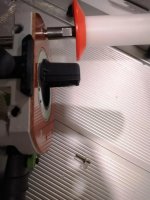 Little Lipper w_chip catcher_conversionbolt_compressed.JPG88.4 KB · Views: 140
Little Lipper w_chip catcher_conversionbolt_compressed.JPG88.4 KB · Views: 140 -
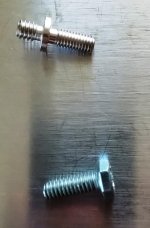 Little Lipper_Threaded Adapter_compressed.JPG86.1 KB · Views: 57
Little Lipper_Threaded Adapter_compressed.JPG86.1 KB · Views: 57 -
 Little Lipper w_chip catcher_compressed.JPG79 KB · Views: 92
Little Lipper w_chip catcher_compressed.JPG79 KB · Views: 92 -
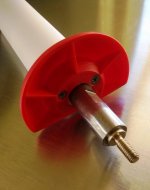 Little Lipper_Threaded Adapter_Installed_compressed.JPG52.1 KB · Views: 53
Little Lipper_Threaded Adapter_Installed_compressed.JPG52.1 KB · Views: 53 -
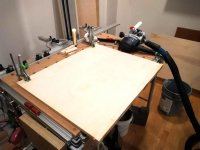 Little Lipper in use_compressed.JPG71.8 KB · Views: 76
Little Lipper in use_compressed.JPG71.8 KB · Views: 76 -
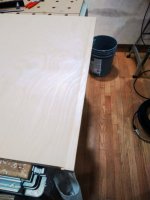 Little Lipper in use_after_compressed.JPG211.4 KB · Views: 69
Little Lipper in use_after_compressed.JPG211.4 KB · Views: 69
